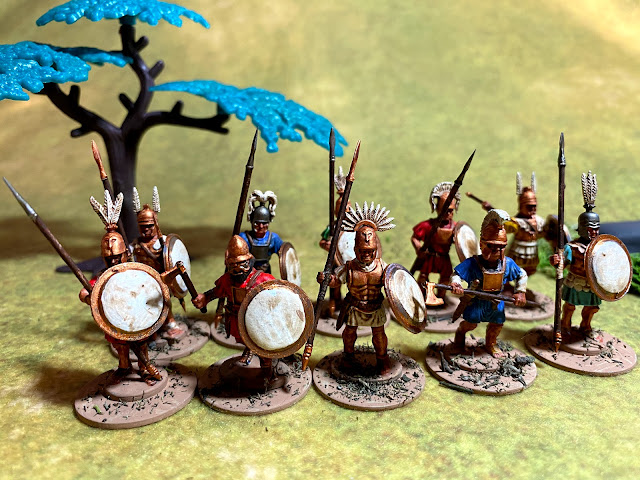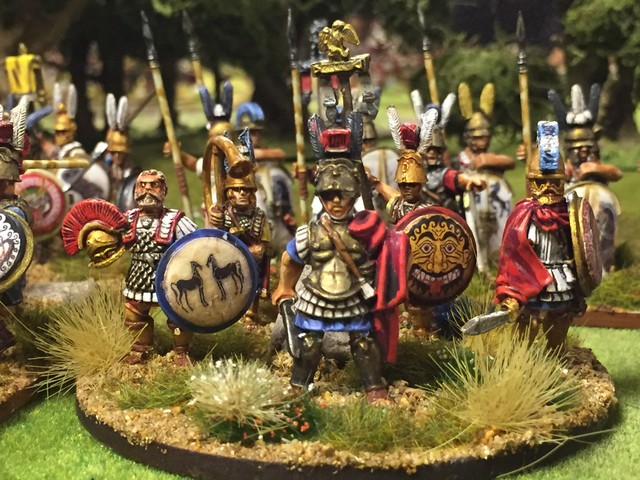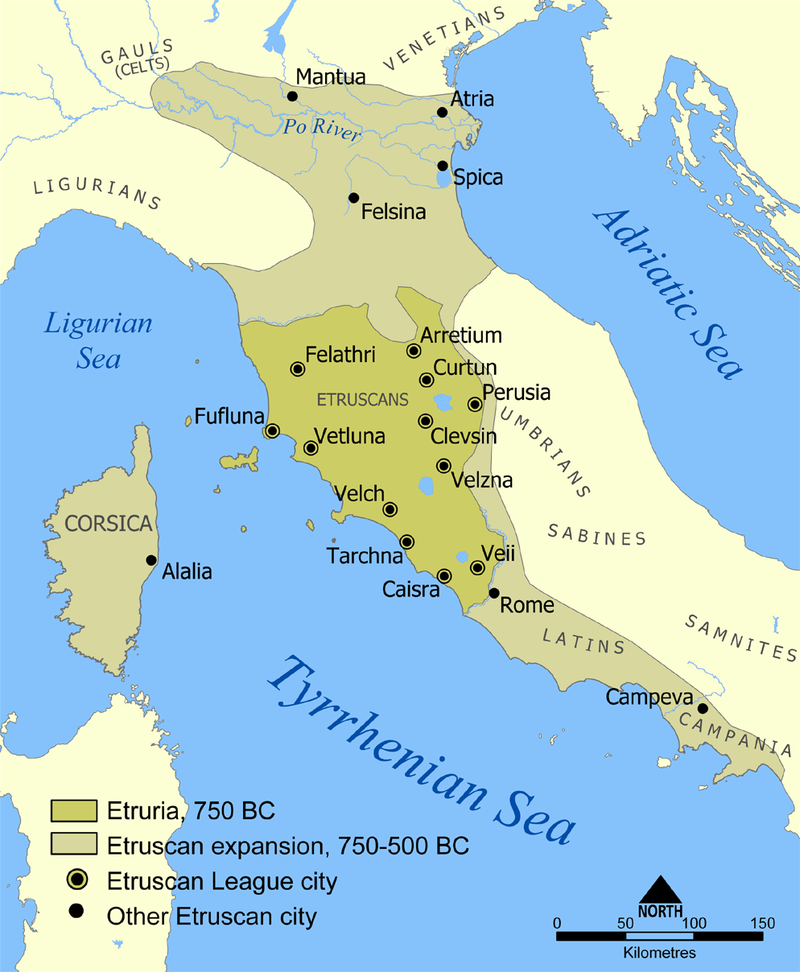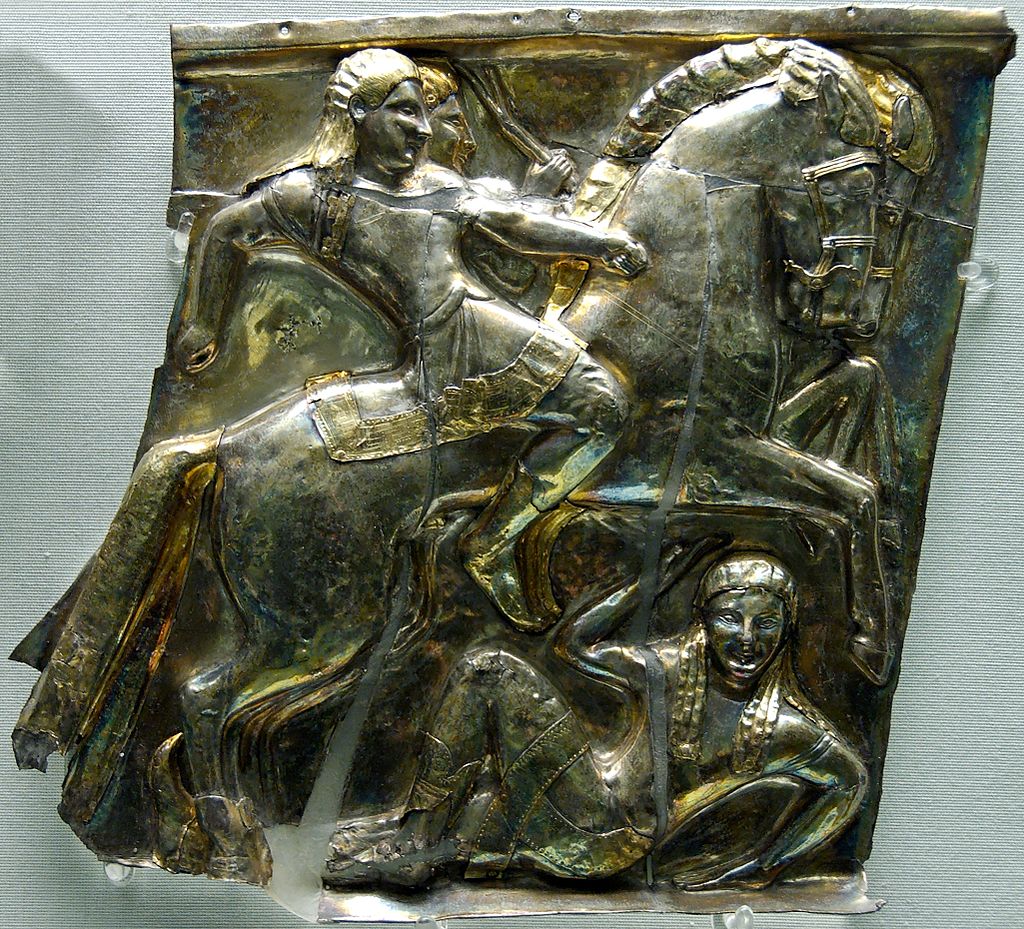Most of the time, we associate the Etruscans with the rise of Rome. This is true, but the Etruscans were not just rivals of Rome, they were also early rivals of Carthage and the Greek settlers into the western parts of the Mediterranean. There was a period known as the Etruscan Expansion that brought Greeks and Etruscans into conflict. Most of the documented battles were at sea, but where there is conflict at Sea, there is also conflict on land. Since we have no remaining written Etruscan sources, such details have likely been lost to history.
Who Were the Etruscans?
The Etruscans were a loose confederation of powerful city-states of the North and Central Italian peninsula. They were a regional power from 600 BCE to about the 4th Century, when they were caught between the rising power of Rome, and the expansionist nature of the Celts.
Legend has it that 12 cities were part of this League. Despite the existence of the League, Etruscan cities were fierce rivals and were not above feuding and fighting
amongst themselves.
The Etruscans themselves have very little written evidence
that remains of their civilization.
Instead, we must rely largely on Greek and Roman accounts from a
legendary age. The other main source of
information is archeology. The Etruscans
may have been colonists from Anatolia, but had a complex relationship with their
mostly Greek neighbors and trading partners.
They entered and conquered much of the Northern Italy around 510
BCE.
It has been theorized that much of the early culture of the Roman military came from the warrior culture of the Etruscans. Some have theorized that Rome herself was a colony or vassal of the Etruscans in its early history. Like the Greek city-states, the Etruscan model had social classes that made up the composition of the army. The defining characteristic was the ability to purchase bronze arms and armor.
The Etruscan elites made extensive use of sea borne trade. They had extensive contacts with the Greek colonists of Magna Graecia and also the Greeks found in Sicily. Greek pottery was a favored trade item. Many of the existing examples of Greek pottery were found in Etruscan tombs. Despite having many cultural similarities with the Greek City-State system, the Etruscans were a less egalitarian and more aristocratic society. The tombs located with Greek pottery were family tombs of the Etruscan elite, an not for individual burials.
How Did They Fight?
The main fighting force of the Etruscans used the Hoplite
Phalanx method of combat. The richest
could buy the bronze shield, cuirass, and helmet needed. These men represented the warrior elite. From this class, the Etruscans formed a
phalanx, cavalry, and even some specialized engineering units. They acted as a “standing army”
The next levels were levied in wartime. They were also equipped as Hoplites, but with
less expensive equipment such as a wooden shield, or smaller breastplate. The final two levels were slingers,
skirmishers, and archers. The poorest
members of the society would not be used in combat operations at all.
It is believed that the Etruscan army was exclusionary in
nature. The main fighting force was
probably drawn from those who were descended from the Anatolian settlers and
acted as the aristocracy. The native
Italians formed the lower ranks of the military.
Such a societal and military model meant many people were
excluded from military service due to class and ethnicity. Therefore, the Etruscan forces were not able
to draw on the same manpower pools as their neighboring rivals such as the
Gauls and Romans. To supplement this,
the Etruscans had to make use of vassals, allies, and mercenaries.
The Etruscans frequently used cavalry, however they
preferred to dismount and fight on foot.
The horse and chariot was a tool
used for mobility and not fighting. This
meant they had heavier equipment, and would only stay mounted when fighting
other cavalry units.
The Etruscans had a warrior culture, and also had warrior
brotherhoods. They were skilled warriors
and took devotional oaths to never retreat in battle. This frequently formed a commanders
“bodyguard” unit and could have been Hoplites, Axemen, or horsemen.
Unlike other contemporary cultures, such as the Romans or Greeks; the Etruscans seemed to make use of the Axe. It is unclear if they were mostly ceremonial or a weapon of warfare. One theory has the armored axemen being used to cut enemy spear points off and pull down the shields of a Phalanx with heavy blows against the shield’s face. This would allow a gap in the shield wall that fellow soldiers would then exploit. However, this practice seems to have been abandoned during the 4th century.
 |
| Illustration of Etruscan Warriors from Warry's: Warfare in the Classical World |
Building the Etruscan Line-of-Battle
The nature of Etruscan warfare allows us to make use of them using many of the Units found in the main Men of Bronze rules.
When you look at the Etruscan military structures, there are two big questions to address. The first is the extensive use of the Javelin as a prelude to Phalanx combat. The main battle line seems to have exchanged Javelin fire prior to closing in an attempt to disrupt the enemy formation. These pre-clash Javelin barrages seem to be a unique feature of warfare on the Italian Peninsula as opposed to battles in Greece and Persia. There, Javelin men and light troops had a more distinct role separate from the Hoplite battle line.
The second element to discuss is the role of Axemen within the Etruscan Hoplite formation. Again, this is a unique element designed to disrupt the opponent's shield wall. Javelins were to disrupt before and just prior to contact, while the Axemen were to disrupt during contact. The tactic also seems to have fallen out of favor, so one must question its effectiveness on the battlefield.
The easiest answer, is to not incorporate these elements into any special rules. Instead, you could just keep them as separate units. Javelin men could be Peltast and Psiloi as the units in Men of Bronze. Axemen could simply by a form of Drilled or Elite Infantry. In this scenario they are individual units in the Hoplite battle line instead of incorporating them into the battle line with special rules.
The other alternative is to create an alternative "Special Rule" that is triggered by the use of an Arete point. This special rule could either increase their attack value, or decrease the enemies Armor value to resist damage. Upon review of how these Javelin and Axe tactics were designed to work, it seems as if reducing an opponent's armor rating aligns better with the tactics intent. It was supposed to disrupt the enemy shield wall.
 |
| Kit Bashed Etruscans with Axemen and Javelin Men from various Victrix LTD Kits |
DisruptionTherefore, let's introduce the following Special Rule for Etruscans:
Units with this Special Rule have the
following rules applied to them:
•
Units that charge automatically use
this ability if they paid the Arete Point token to charge.
•
The unit that is being charged has
their Armor rating reduced by 1 to a minimum of 1.
•
If a unit is charged by the enemy,
they can spend 1 Arete Point to use this ability. The attacker has their Armor rating reduced
by 1 to a minimum of 1.
•
This reduction only lasts for the turn
that the charge occurs.
Ultimately, I will try to incorporate both solutions into the rules for the Etruscans in Men of Bronze. I will make some tweaks to their actual forces available to them, and also apply a new Special Rule unique to this army. In addition, the Disruption Special Rule will allow you to put a few Axemen into your units as opposed to only have a sperate unit of them!
Etruscan Line-of-Battle
Etruscans
0-1
Elite Hoplites*
0+
Drilled Hoplites*
1+
Militia Hoplites*
0-1 Psiloi/Slingers/Archers
0-2
Drilled Infantry*
0-1
Light Cavalry
*- Unit can be given the Disruption Special Rule for +1 point
In the army list above, you can see that the Disruption rule is being used to replace an individual unit of Peltasts and leaving only a single psiloi at the expense of archers/slingers. It helps make the list unique from other Greek lists. In addition, the adding of Drilled Infantry for additional Axemen does the same. This makes the army relatively "aristocratic" and "Elite" in nature.
Finally, the Disruption Special Rules gives us the final ingredient to help us capture the nature of Etruscan fighting compared to their Greek rivals in Magna Graecia and abroad.
Sample Army List
Below you can see a Sample Army built from the Line of Battle provided. It is intended to give you an idea of what an Etruscan Force could look like on the battlefield. It is built to 38 points, and has X Units.
1 Drilled Hoplite
- Disruption
1 Drilled Infantry
- Disruption
2 Militia Hoplite
1 Psiloi
 |
| Late Etruscans from Aventine Miniatures: https://aventineminiatures.co.uk/img_5812/ |
Battle for Corsica
Most of the recorded fighting between Greeks and Etruscans took place at sea. This included the Battle of Alalia and the Battle of Cumae. The Etrsucans were allied with the Carthaginians, who wanted to shut the expansionists Greeks out of the Western Mediterranean. On the line were valuable trading points in Corsica and Spain.
The Phocacaeans were settlers from Greek Asia Minor. They were spreading westward, and had founded a colony on Massalia. The Carthaginians had tried and failed to thwart these Greek efforts. The Greeks also founded a city on Corsica called Alalia. After the Ionian Greek coast fell to Persia, many of the Ionian Greeks fled to Alalia. From here, the Greeks began to cause problems with the Punic and Etruscan trade routes in the area.
The Carthaginians and Etruscans decided to put this menace down. This time, the Greeks faced off against a combined fleet of Etruscans and Carthaginians in 540 BCE. The Greeks won the battle. However, they were forced to fall back to Rhegium. Despite winning the battle, the Greeks had to flee and eventually gave up in Corsica. The Greeks founded Elea in Magna Graecia instead.
This allowed Etruscan forces to establish themselves on Corsica, and to secure it. Again, since the Etruscans records do not survive, and the Greek records are also scarce, much of this time period in the Western Mediterranean is poorly documented. This gives us as Wargamers some space to operate and create "What If" or speculative scenarios for our games to operate.
In this case, we will assume that the remaining Greek colonists in and around Alalia have joined forces to defend themselves from the Etruscan advance into the region. To aid them, they have allied or hired groups of Corsi (and other local tribes) to fight as light infantry forces. In the meantime, the Etruscans have moved to solidify their hold on the island and re-exert their influence. The Etruscan army is made up of adventurers, brotherhoods, and nobles from the newly formed Etruscan League eager to expand their power.
Forces:
Etruscan League
1 Drilled Hoplite- Disruption
1 Drilled Infantry Axemen- Disruption
2 Militia Hoplites
1 Psiloi
Ionian Greeks and Allies
1 Drilled Hoplite
2 Militia Hoplites
2 Peltasts - Corsi and Others
1 Archer - Corsi and Others
There are no actual records of such a conflict, and indeed the people of Alalia may have actually just let Etruscan administrators enter the city and take over. Who knows? However, as wargamers it is more fun to create a conflict even if there are no documents to support any of it. We just know the Etruscans and Carthaginians fought the Greeks in a few Naval battles around the Itallic, Sicillian, and Corsican coasts for control of the trade routes.
Set-up:
This battle, could be a coupe of scenarios from the Men of Bronze book. Indeed, it could be fun to create a series of linked battles into a small mini-campaign. However, for this battle we will make it a stand-up fight between the two groups just after the Etruscans have made landfall in their Pentekonters (pre-Trireme even!) ships. Prior to the battle, I imagine the Etruscans would make their claims to Corsica as Spear-won land, while the Greeks would assert their independence. They would then agree to engage in a ritualized combat to decide the matter, with the winner raising a trophy and claiming Alalia without further bloodshed. Battle in this period between city-states was ritualized, but Etruscans tended to fight for spoils and slaves; so perhaps battles between cultures would be less formalized? We really do not know.
This game should take place on a 72 Base width by 48 base width board. Deploy terrain and roll for complications as normal. Deployment in such a ritualized battle would also follow that found in the main rules. Use the Set-Piece Battle scenario as a guide.
Special Rules:
This scenario is designed to allow players to feel how Etruscan armies play versus a traditional Greek army. Therefore, no special rules are needed.
Victory:
Victory conditions should be the same as for a Set-Piece Battle scenario in the main Men of Bronze rule book.
Final Thoughts
The battles between Etruscan and Greek colonists of Magna Graecia took place long ago and are poorly documented. However, the Greeks were an expansionistic culture, and the Etruscans were an established trading empire and military force on land and sea. It is inevitable that these two cultures would clash! These clashes took place before Salamis and before Himera even. They were long standing grudges. Despite our knowledge mostly involving Naval battles the endemic raiding and warfare of the period does not preclude land conflicts as well.
The Etruscans in addition to fighting Greeks from the Men of Bronze rules could also encounter the Carthaginians and Barbarian Tribes from the main rules. These conflicts would eventually be put to an end by the rise of a third power house in the region; Rome.
You can get all of the updated materials including a FAQ, Campaign rules, and Lines-of-Battle in the Men of Bronze Supplement: Hercules Abroad.






Thanks for the continued support of the rules and a very interesting and useful post. Now all I hav to do is paint up enough figs (which are in the lead pile) to use the list.
ReplyDelete